Nest 里也有中间件 Middleware 的概念,它和 Express 的 Middleware 是一个东西么?
很像,但不一样。
上节讲过,Nest 并不是直接依赖于 Express,可以切换到别的 http 请求处理库,那 Nest 的特性肯定也不直接是 Express 里的。
我们创建个项目,边写边看:
nest new middleware-test
进入项目,执行:
nest g middleware aaa --no-spec --flat
# 创建 middleware:

因为这时候并不知道你用的 express 还是 fastify,所以 request、response 是 any,手动标注下类型就好了:
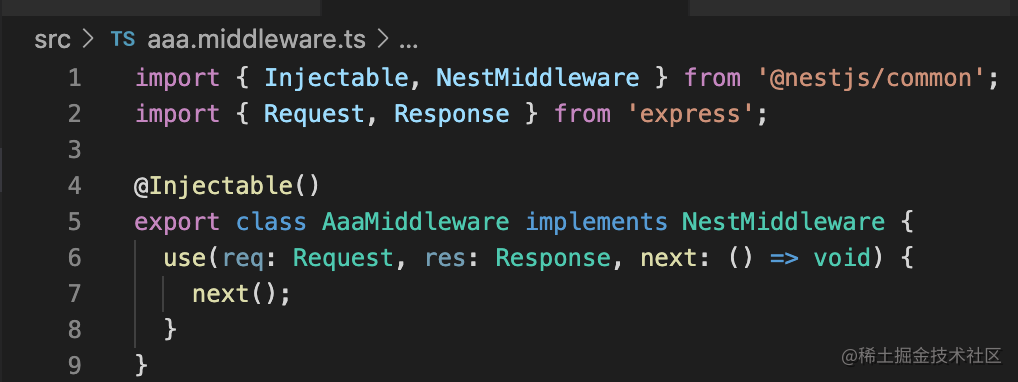
这里是 express 的 request、response。
加一下前后的的逻辑:
import { Injectable, NestMiddleware } from '@nestjs/common';
import { Request, Response } from 'express';
@Injectable()
export class AaaMiddleware implements NestMiddleware {
use(req: Request, res: Response, next: () => void) {
console.log('brefore');
next();
console.log('after');
}
}
2
3
4
5
6
7
8
9
10
11
# 使用
然后在 Module 里这样使用:
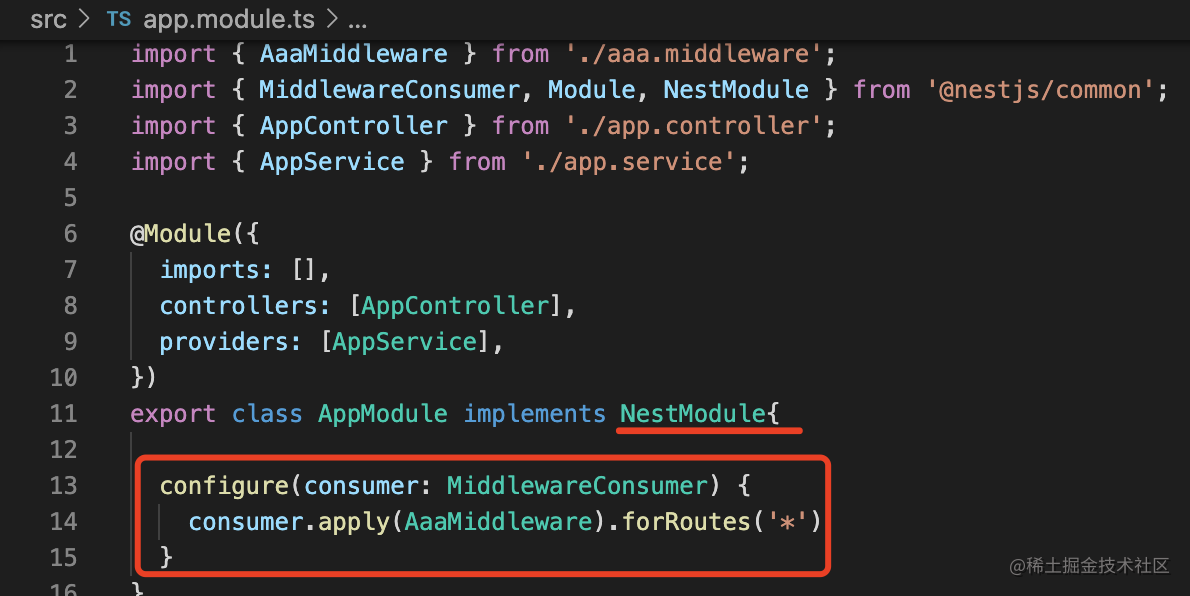
import { AaaMiddleware } from './aaa.middleware';
import { MiddlewareConsumer, Module, NestModule, RequestMethod } from '@nestjs/common';
import { AppController } from './app.controller';
import { AppService } from './app.service';
@Module({
imports: [],
controllers: [AppController],
providers: [AppService],
})
export class AppModule implements NestModule{
configure(consumer: MiddlewareConsumer) {
consumer.apply(AaaMiddleware).forRoutes('*');
}
}
2
3
4
5
6
7
8
9
10
11
12
13
14
15
16
17
实现 NestModule 接口的 configure 方法,在里面应用 AaaMiddleware 到所有路由。
然后跑起来试一下:
nest start --watch
浏览器访问 http://localhost:3000 (opens new window)

可以看到中间件的逻辑都执行了:
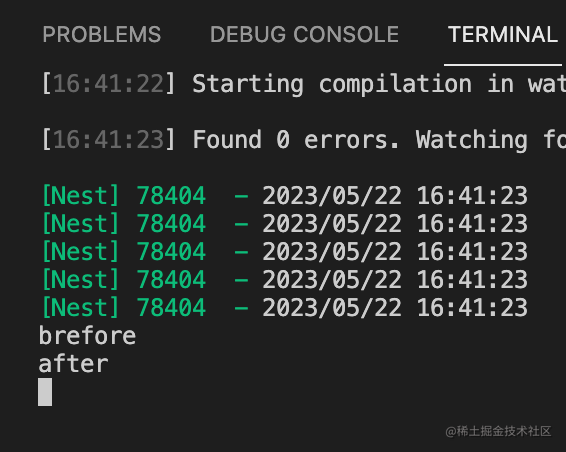
这里也可以指定更精确的路由。
我们添加几个 handler:
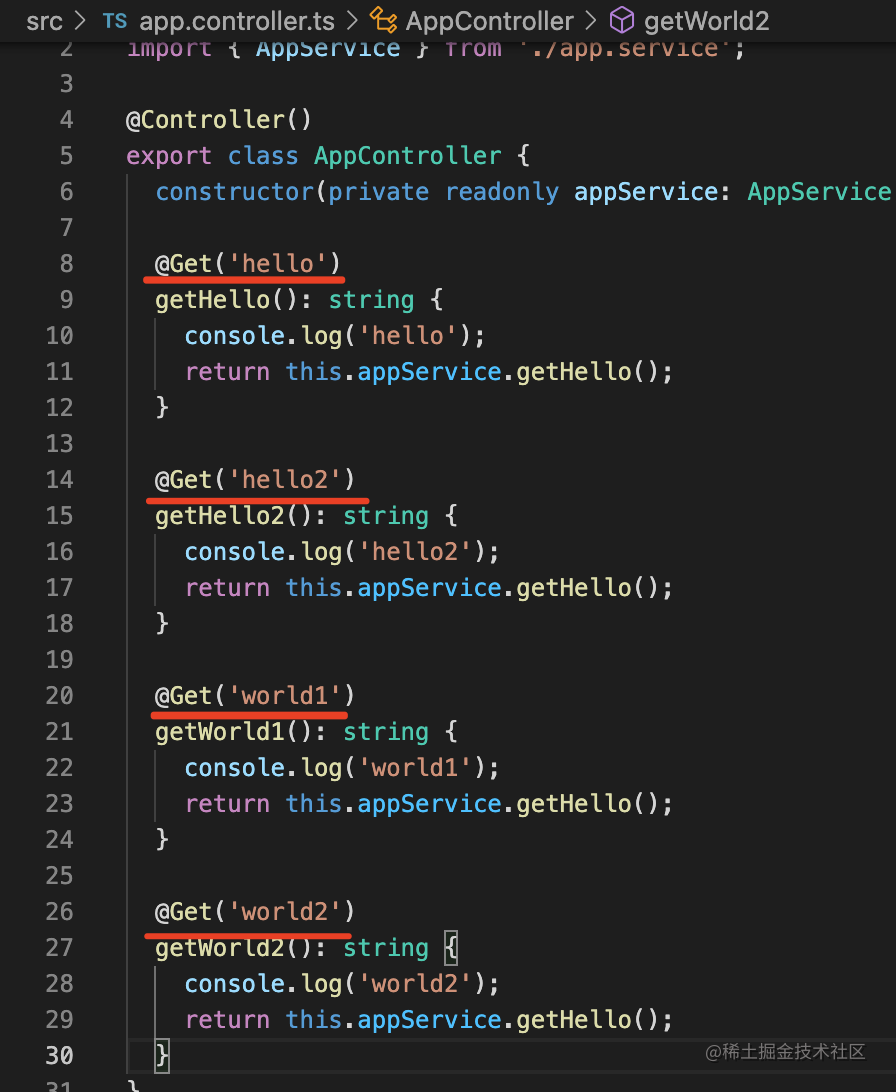
# 指定路由
然后重新指定 Middleware 应用的路由:
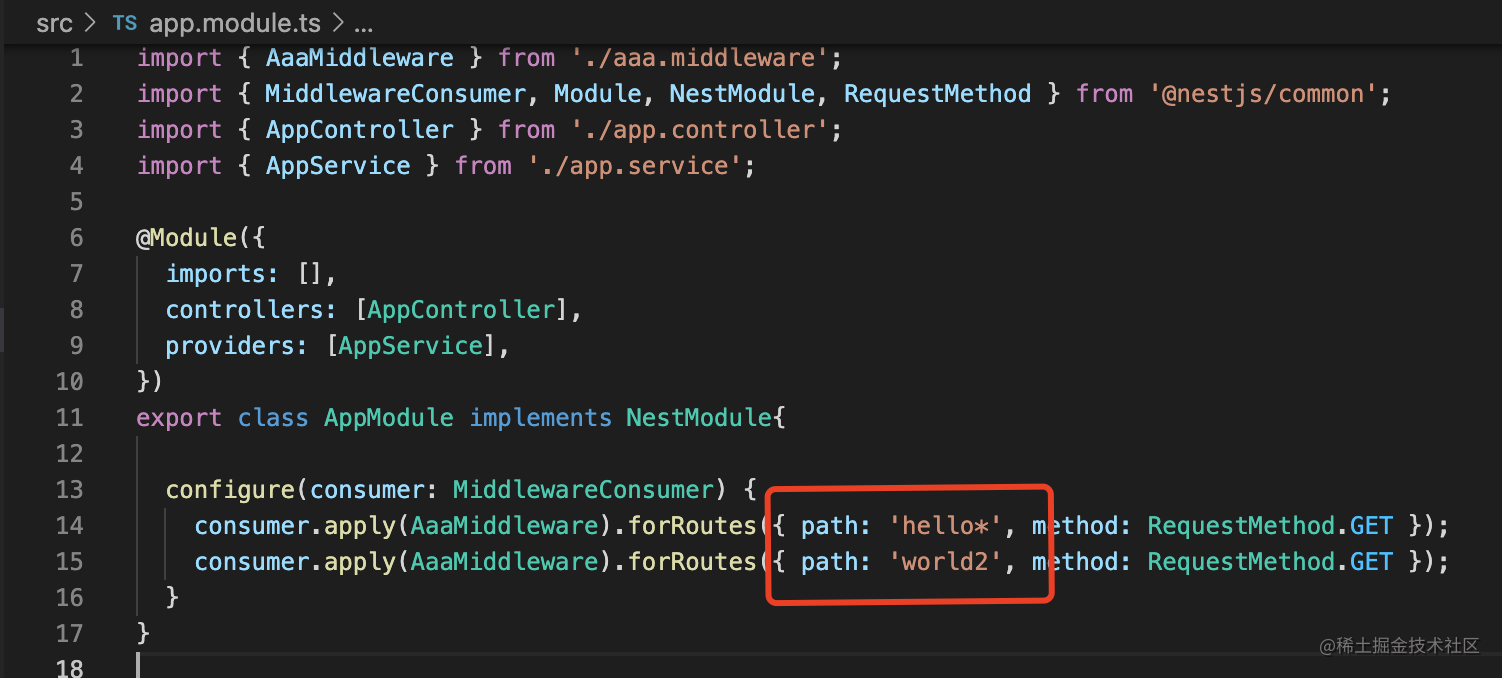
import { AaaMiddleware } from './aaa.middleware';
import { MiddlewareConsumer, Module, NestModule, RequestMethod } from '@nestjs/common';
import { AppController } from './app.controller';
import { AppService } from './app.service';
@Module({
imports: [],
controllers: [AppController],
providers: [AppService],
})
export class AppModule implements NestModule{
configure(consumer: MiddlewareConsumer) {
consumer.apply(AaaMiddleware).forRoutes({ path: 'hello*', method: RequestMethod.GET });
consumer.apply(AaaMiddleware).forRoutes({ path: 'world2', method: RequestMethod.GET });
}
}
2
3
4
5
6
7
8
9
10
11
12
13
14
15
16
17
可以看到,hello、hello2、world2 的路由都调用了这个中间件,而 world1 没有:
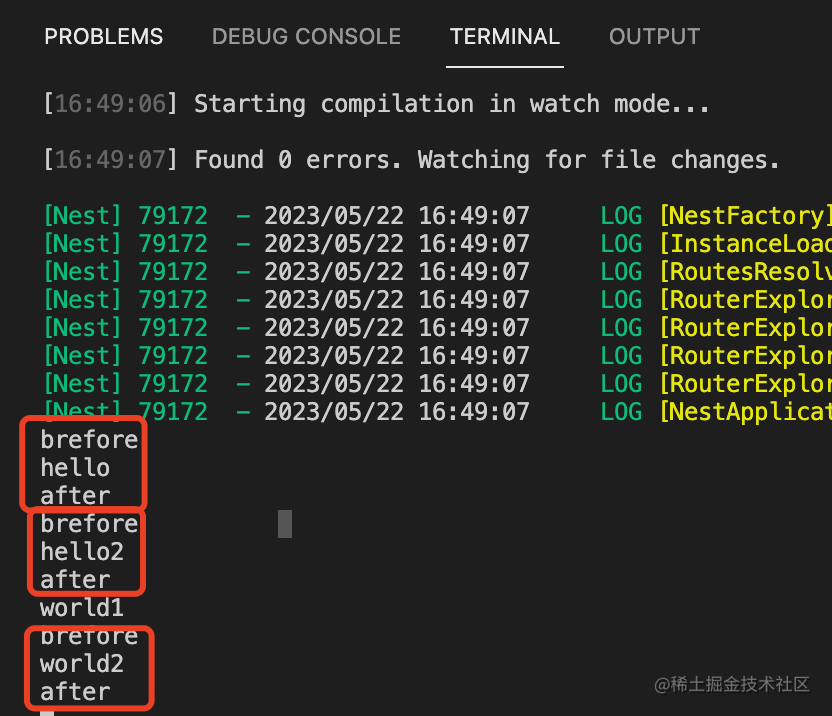
这就是 Nest 里 middleware 的用法。
如果只是这样,那和 Express 的 middleware 差别并不大,无非是变成了 class 的方式。
Nest 为什么要把 Middleware 做成 class 呢?
当然是为了依赖注入了!
我们通过 @Inject 注入 AppService 到 middleware 里:
import { AppService } from './app.service';
import { Inject, Injectable, NestMiddleware } from '@nestjs/common';
import { Request, Response } from 'express';
@Injectable()
export class AaaMiddleware implements NestMiddleware {
@Inject(AppService)
private readonly appService: AppService;
use(req: Request, res: Response, next: () => void) {
console.log('brefore');
console.log('-------' + this.appService.getHello());
next();
console.log('after');
}
}
2
3
4
5
6
7
8
9
10
11
12
13
14
15
16
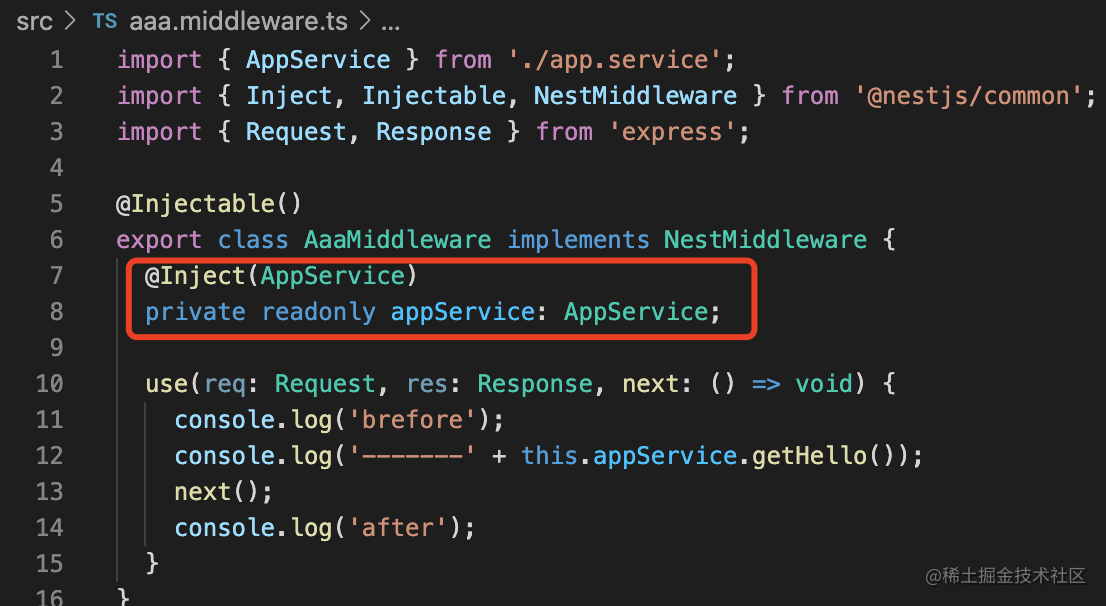
当然,这里也可以用构造器注入,这样更简洁一点:
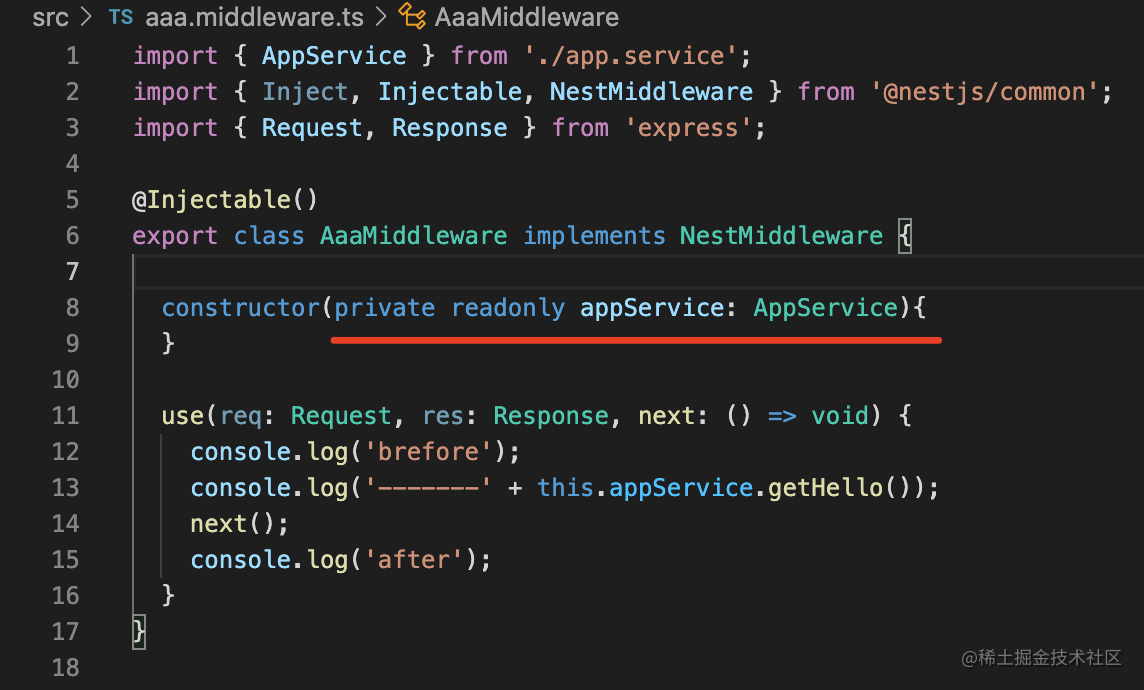
这时在访问这个路由的时候,就可以看到中间件成功调用了 AppService:
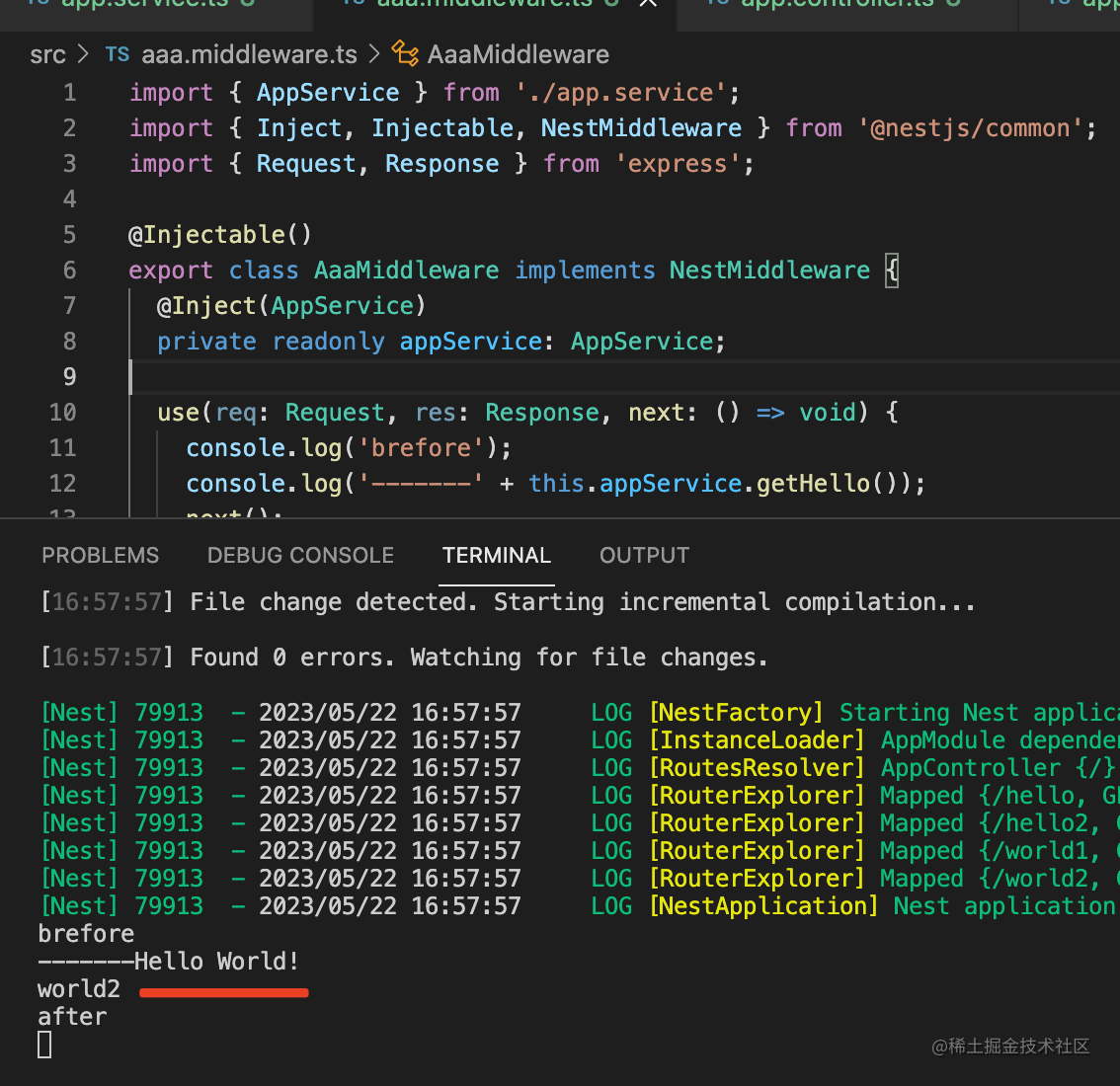
这就是 Nest 注入的依赖。
如果不注入依赖,那写函数的方式也是可以的。
看这个 apply 方法的类型声明也可以看出来:

如果不需要注入依赖,那可以写函数形式的 middleware,这时候和 Express 的 middleware 就没啥区别了。
如果需要注入依赖,那就写 class 形式的 middleware,可以用 Nest 的依赖注入能力。
当然,应用实例对象也可以 use 中间件,这个就和 express 那个一样了:
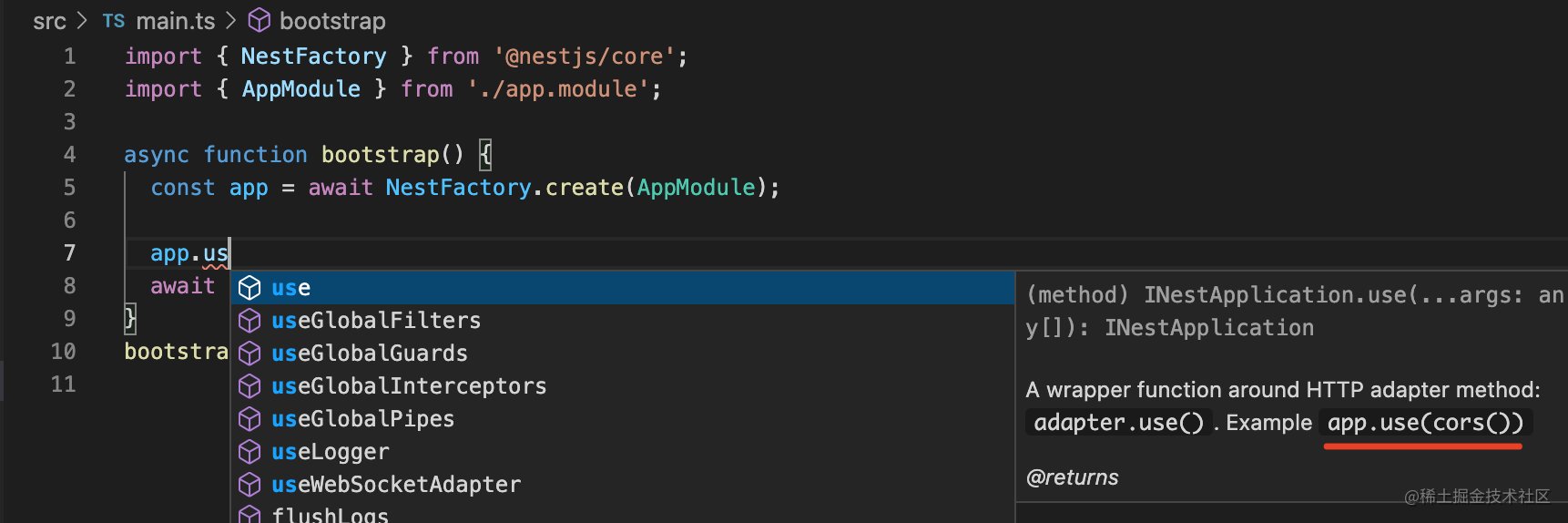
不过这种形式不能注入依赖,而且也不能配置应用到什么路由,不建议用。
app.use 等同于在 AppModule 的 configure 方法里的 forRoutes('*')
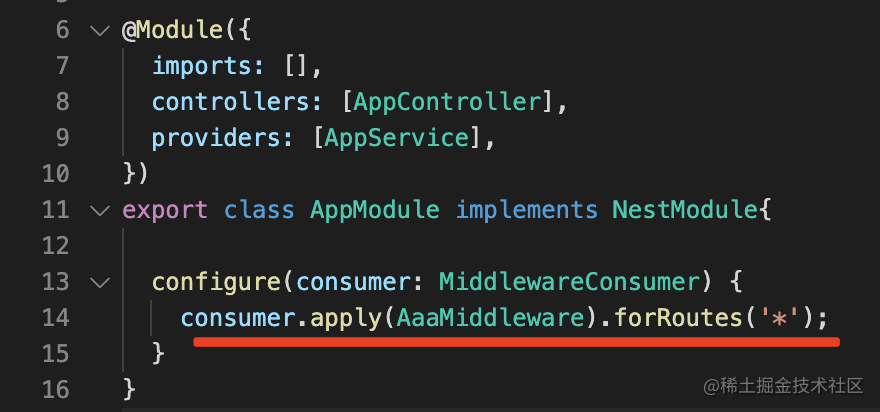
此外,middleware 里有个 next 参数,而 Nest 还有个 @Next 装饰器,这俩的区别是什么呢?
middleware 的 next 参数就是调用下一个 middleware 的,这个很好理解。
# @Next
而 @Next 装饰器是调用下一个 handler 的:
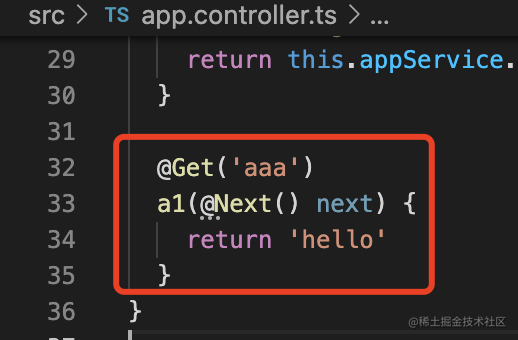
但如果是这样一个 handler,它就不返回值了:
这个和加上 @Response 装饰器的时候的效果一样。
因为 Nest 认为你会自己返回响应或者调用下个 handler,就不会处理返回值了。
如果依然想让 Nest 把函数返回值作为响应,可以这样写:
这个上节讲过。
当然,传入 Next 参数的时候,一般是不需要在这里响应的,一般是调用下个 handler 来响应:
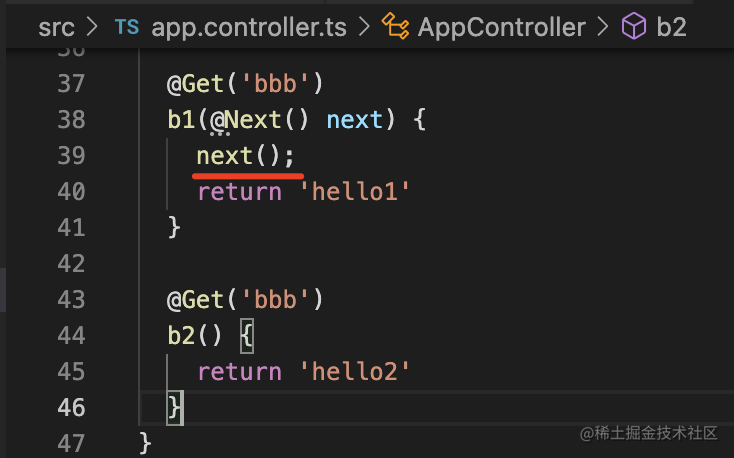
不过一般也不需要这样写,直接写在一个 handler 里就行。
有的同学可能会问:Nest 的 middleware 和 interceptor 都是在请求前后加入一些逻辑的,这俩区别是啥呢?
区别有两点:
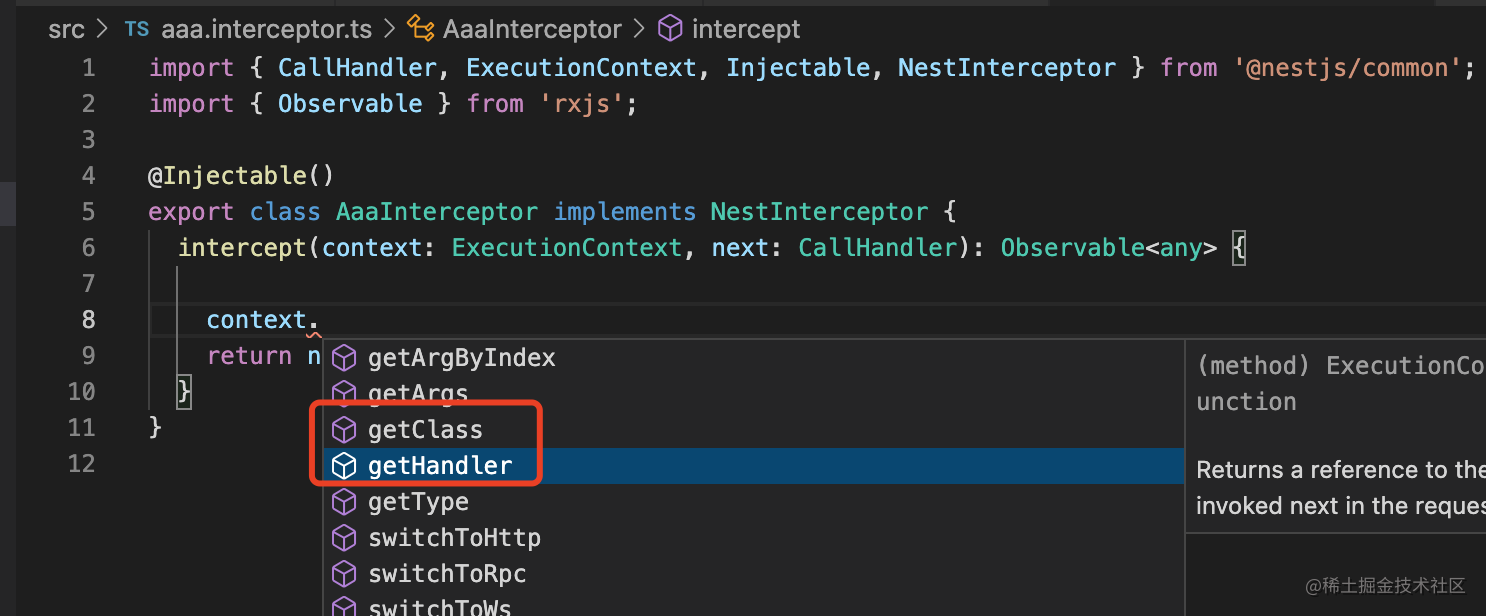
interceptor 是能从 ExecutionContext 里拿到目标 class 和 handler,进而通过 reflector 拿到它的 metadata 等信息的,这些 middleware 就不可以。
再就是 interceptor 里是可以用 rxjs 的操作符来组织响应处理流程的:
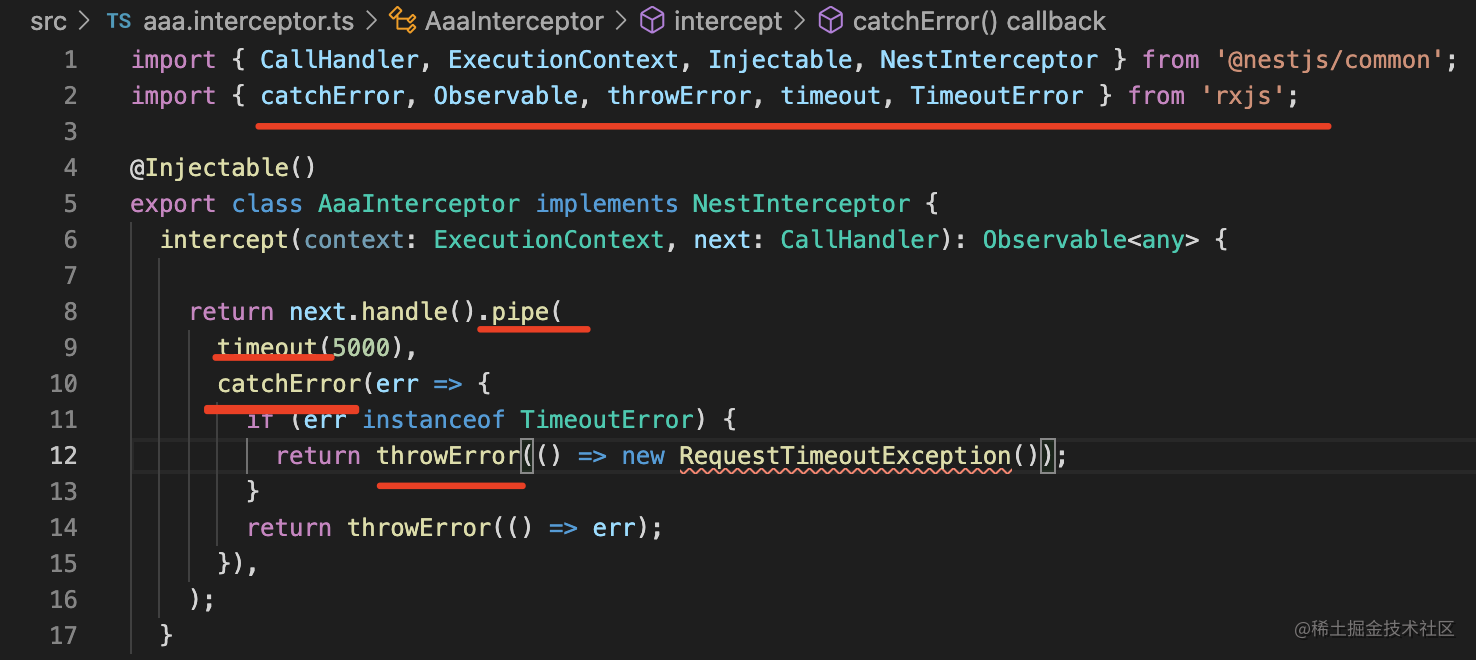
middleware 里也不可以。
它们都是 Nest AOP 思想的实现,但是 interceptor 更适合处理与具体业务相关的逻辑,而 middleware 适合更通用的处理逻辑。
案例代码在小册仓库 (opens new window)。
# 总结
Nest 也有 middleware,但是它不是 Express 的 middleware,虽然都有 request、response、next 参数,但是它可以从 Nest 的 IOC 容器注入依赖,还可以指定作用于哪些路由。
用法是 Module 实现 NestModule 的 configure 方法,调用 apply 和 forRoutes 指定什么中间件作用于什么路由。
app.use 也可以应用中间件,但更建议在 AppModule 里的 configure 方法里指定。
Nest 还有个 @Next 装饰器,这个是用于调用下个 handler 处理的,当用了这个装饰器之后,Nest 就不会把 handler 返回值作为响应了。
middleware 和 interceptor 功能类似,但也有不同,interceptor 可以拿到目标 class、handler 等,也可以调用 rxjs 的 operator 来处理响应,更适合处理具体的业务逻辑。
middleware 更适合处理通用的逻辑。
